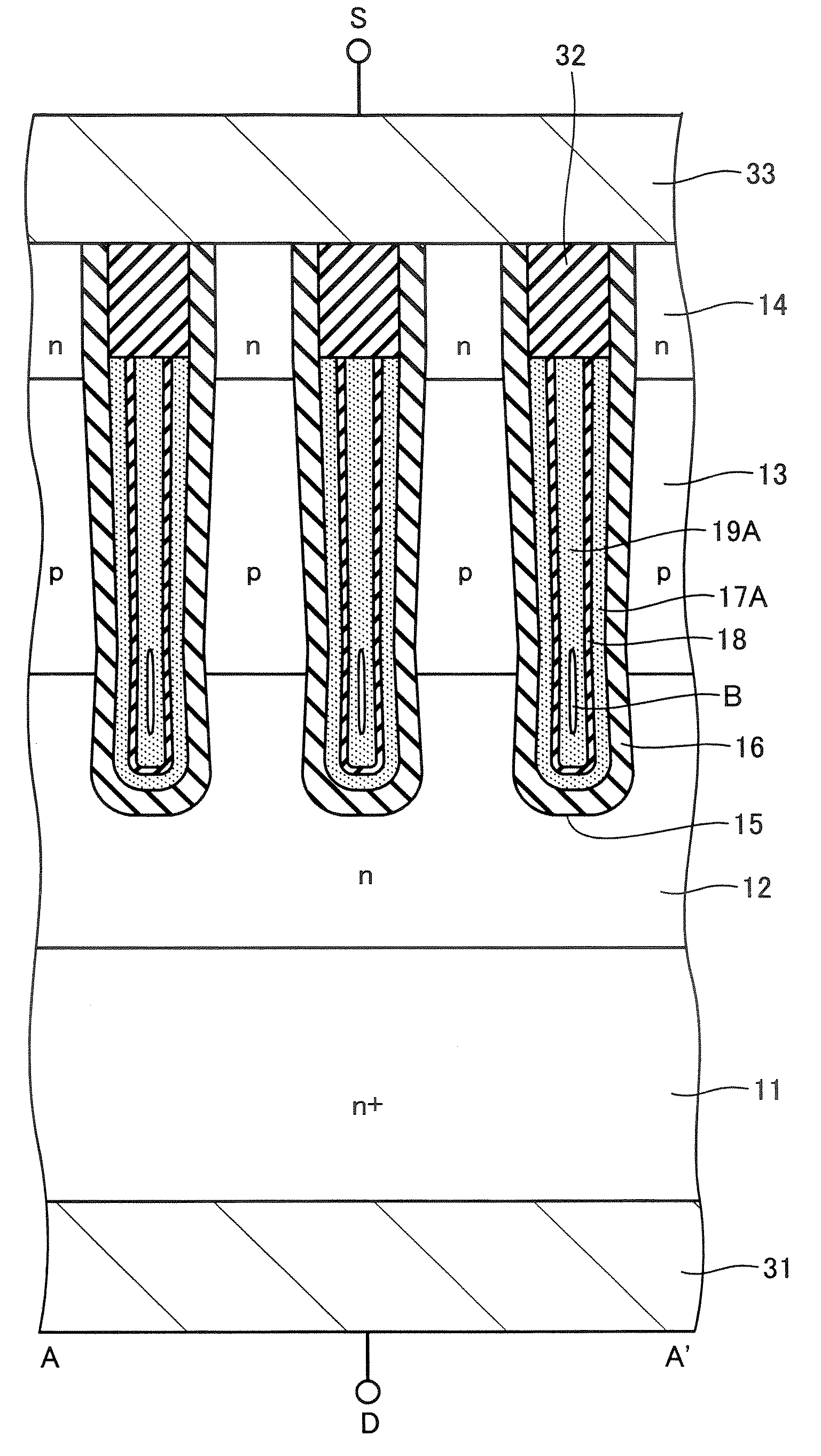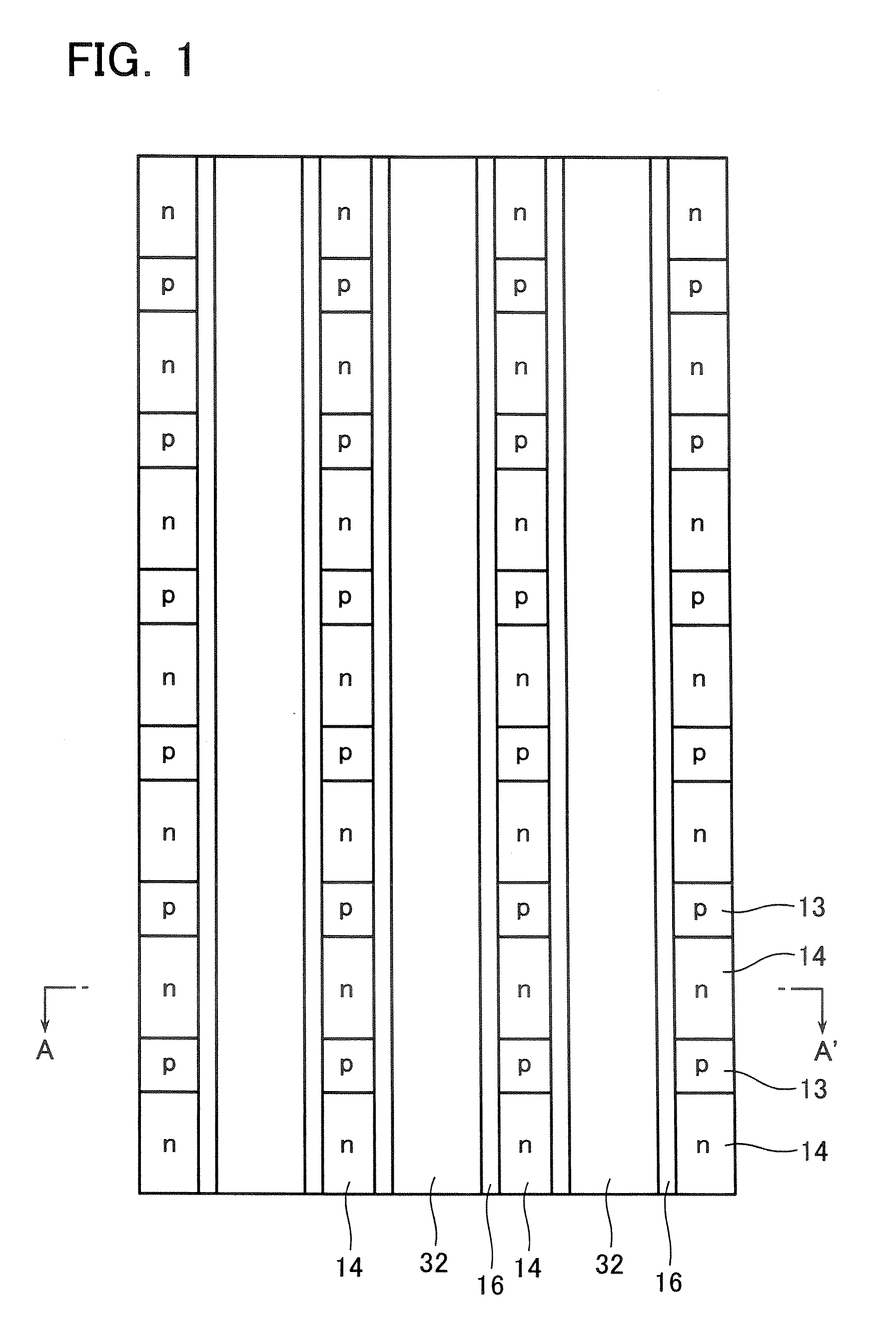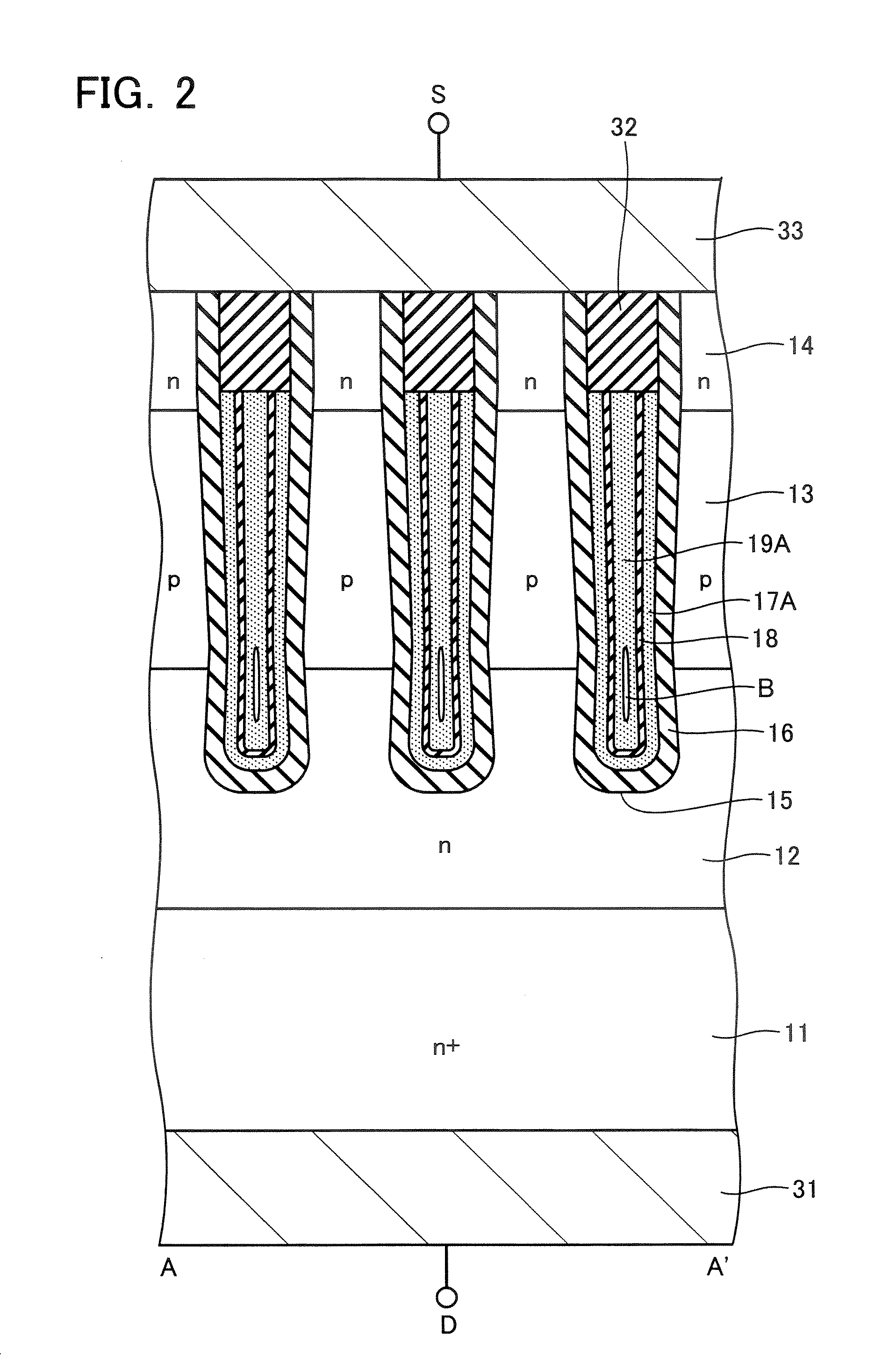Semiconductor device
a technology of semiconductor devices and semiconductors, applied in the direction of semiconductor devices, basic electric elements, electrical equipment, etc., can solve the problems of increasing resistance, power consumption, resistance and resistance in the element, and deteriorating breakdown voltag
- Summary
- Abstract
- Description
- Claims
- Application Information
AI Technical Summary
Problems solved by technology
Method used
Image
Examples
Embodiment Construction
[0018] Semiconductor devices according to the embodiments of the present invention will now be described next in detail with reference to the drawings. FIG. 1 shows a plan view of a semiconductor device according to a first embodiment of the present invention, and FIG. 2 shows an A-A′ cross-sectional view thereof. FIG. 1 shows a plan view in a state where a later-described source electrode 33 is removed. In the following embodiments, with the first and second conduction types exemplified as the n-type and p-type, an n-channel MOS transistor having a p-type base layer is shown.
[0019] As shown in FIG. 2, the n-channel MOS transistor comprises an n+-type silicon substrate 11. The n+-type silicon substrate 11 serves as a drain layer connected to a drain electrode 31 on the rear surface. Formed on the silicon substrate 11 is an n-type drift layer 12 having a lower impurity concentration and a higher resistance than those of the silicon substrate 11, and a p-type base layer 13 is formed ...
PUM
 Login to View More
Login to View More Abstract
Description
Claims
Application Information
 Login to View More
Login to View More - R&D
- Intellectual Property
- Life Sciences
- Materials
- Tech Scout
- Unparalleled Data Quality
- Higher Quality Content
- 60% Fewer Hallucinations
Browse by: Latest US Patents, China's latest patents, Technical Efficacy Thesaurus, Application Domain, Technology Topic, Popular Technical Reports.
© 2025 PatSnap. All rights reserved.Legal|Privacy policy|Modern Slavery Act Transparency Statement|Sitemap|About US| Contact US: help@patsnap.com



